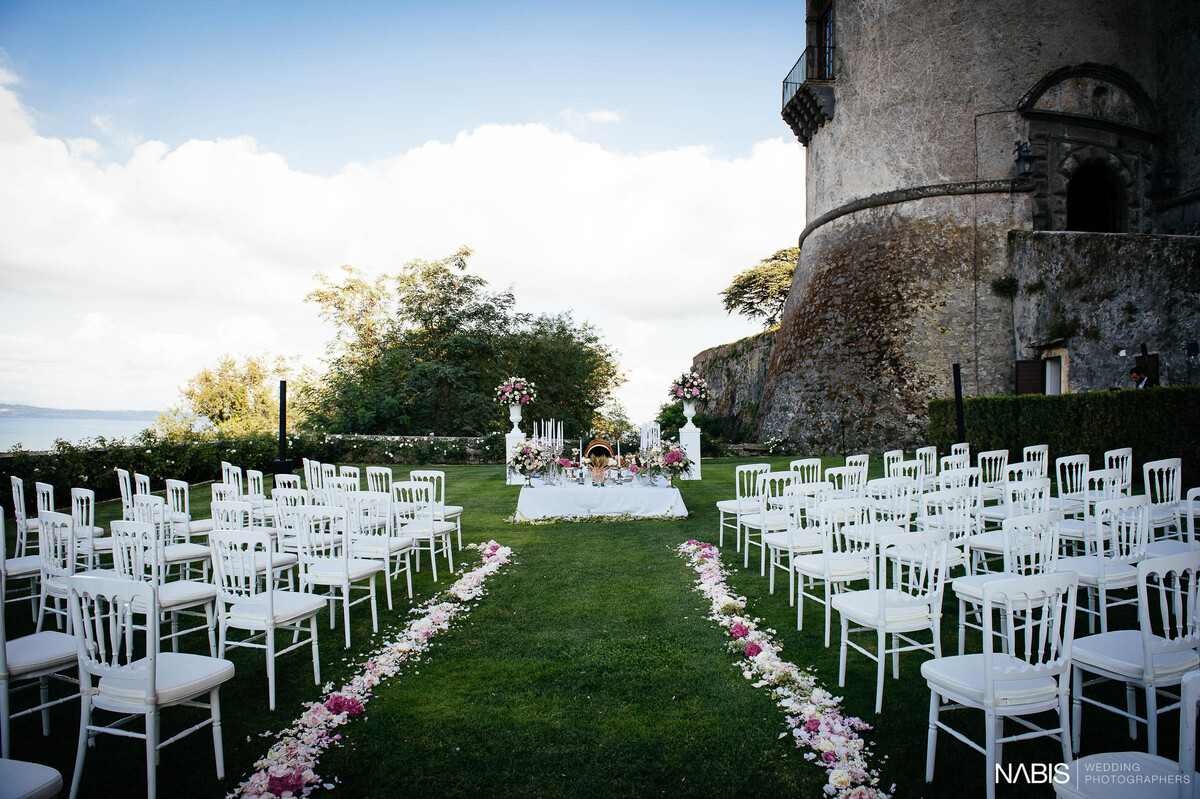
Persian Destination Weddings In Italy
Anyone who has ever attended a Persian wedding has seen the beautiful details and opulence that goes into the décor and vision. These ceremonies are planned very carefully, and although couples who are getting married now may be very different than couples were hundreds of years ago, it is still very important to most of them to honor tradition by staying true to the cultural Persian wedding ceremony. Because of this, the actual Persian wedding ceremony has remained basically the same over the centuries. This ceremony is made up of two parts: the Aghd ceremony and the reception.

The Sofreh Aghd is the ceremony portion of the wedding in which the bride and groom sit in front of an assorted sofreh (or table) full of items that have meanings behind them. The Sofreh Aghd represents the symbolic and traditional union of the bride and groom. It is an intricate spread of items that stand for the shared journey of life and marriage the couple is about to embark on. The elements you’ll find in a Sofreh Aghd include the following:
The Mirror – as one of the most important items on the Sofreh Aghd, the mirror or Ayaneh represents light, truth, purity, and reality. It is thought to keep the couple true and genuine, and often is brought into their home once they are married to sit in a place of noticeable display. In this mirror, their unity is confirmed and reflected for the world to see. This mirror is also often the first place that the groom sees his bride.
A Cup of Honey – one of the most beloved parts of the Sofreh Aghd is the honey exchange. The bride and groom dip their pinky fingers in the honey and place them in one another’s mouth. This is done to sweeten their lives together, and typically takes place near the end of the ceremony.
Spices – the tray of seven spices is presented to protect the couple from the “evil eye”—that is, the bad intentions of anyone who does not approve of the marriage. The seven spices include frankincense, wild rice, fennel, poppy seeds, salt, black tea leaves, and Angelica.
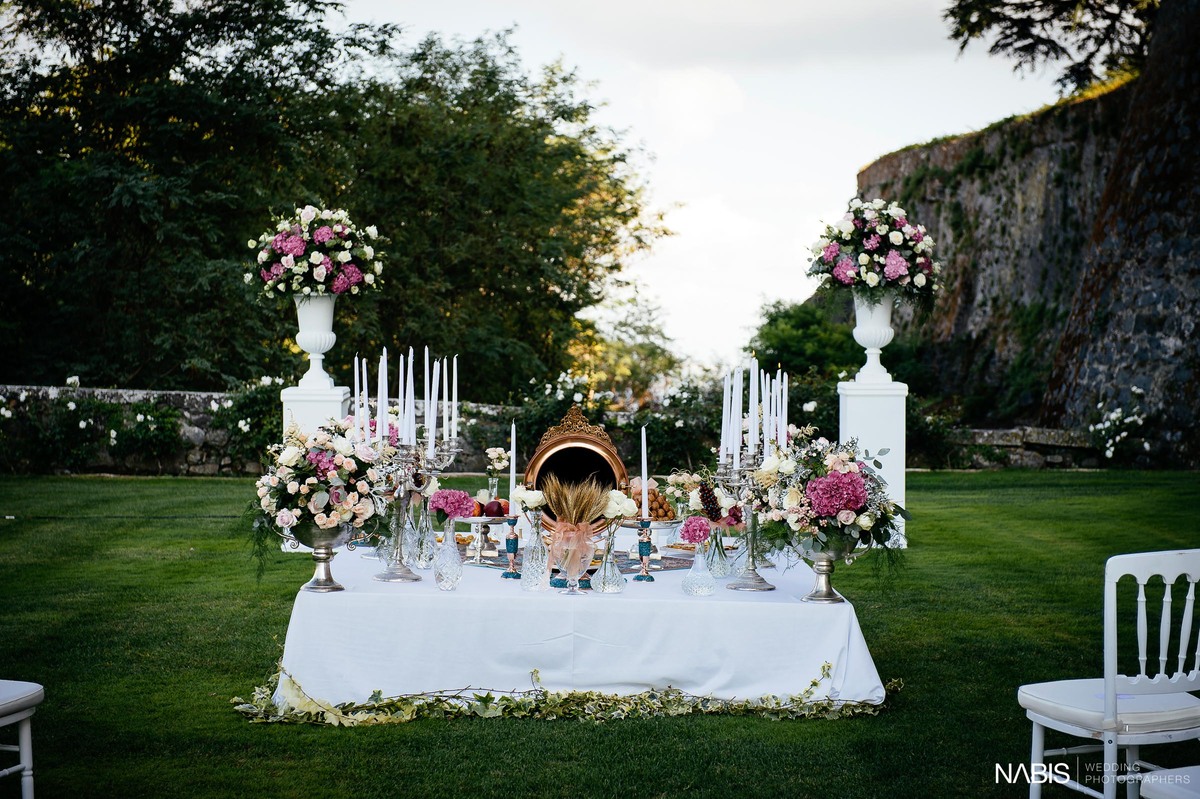
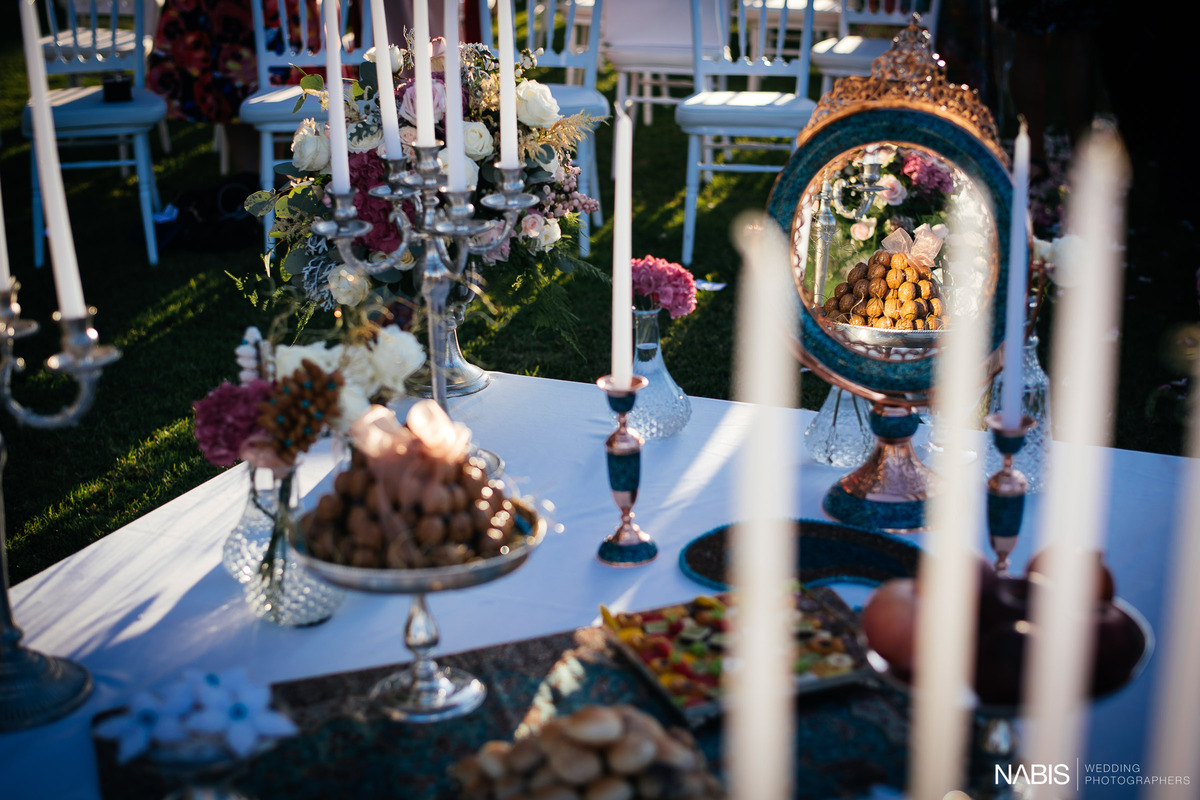
Decorated Flatbread – the “bread of life”, or Naan-e Sangak, is beautifully decorated flatbread that symbolizes good health and prosperity for the couple. It typically includes words and phrases of congratulations, written in cinnamon or saffron.
Sugar Cones – in one of the most photogenic and beloved of Persian wedding traditions, two sugar cones, or Kalleh Ghand, are rubbed together and sprinkled over the couple by the wedding guests. This is said to make the union even sweeter, invoking good energy from the guests who are already happily married. The sugary storm is collected by the Ghand cloth, another item included in the spread, which is made of elegant fabric and is held above the couple’s heads throughout the ceremony. As one of the most interactive parts of the Sofreh Aghd, this is also one of the most memorable.
Wild Rue- is presented at the Sofreh Aghd to get rid of any negative vibes. The seeds are tossed over burning coals, giving off smoke that is believed to eliminate any bad energy that any of the guests may have projected into their space. These seeds make a popping sound as they burn, so the more popping sounds they make, the more bad energy is banished.
The Termeh – an embroidered wool or silk cloth which is deeply traditional, the Termeh is a gorgeous, colorful, and meaningful addition to the Sofreh Aghd spread. Termehs are typically passed down in families from generation to generation, and is generally used as a prayer rug. Because of this, it is included in the Sofreh Aghd as a reminder to the couple of the importance of God in their marriage.
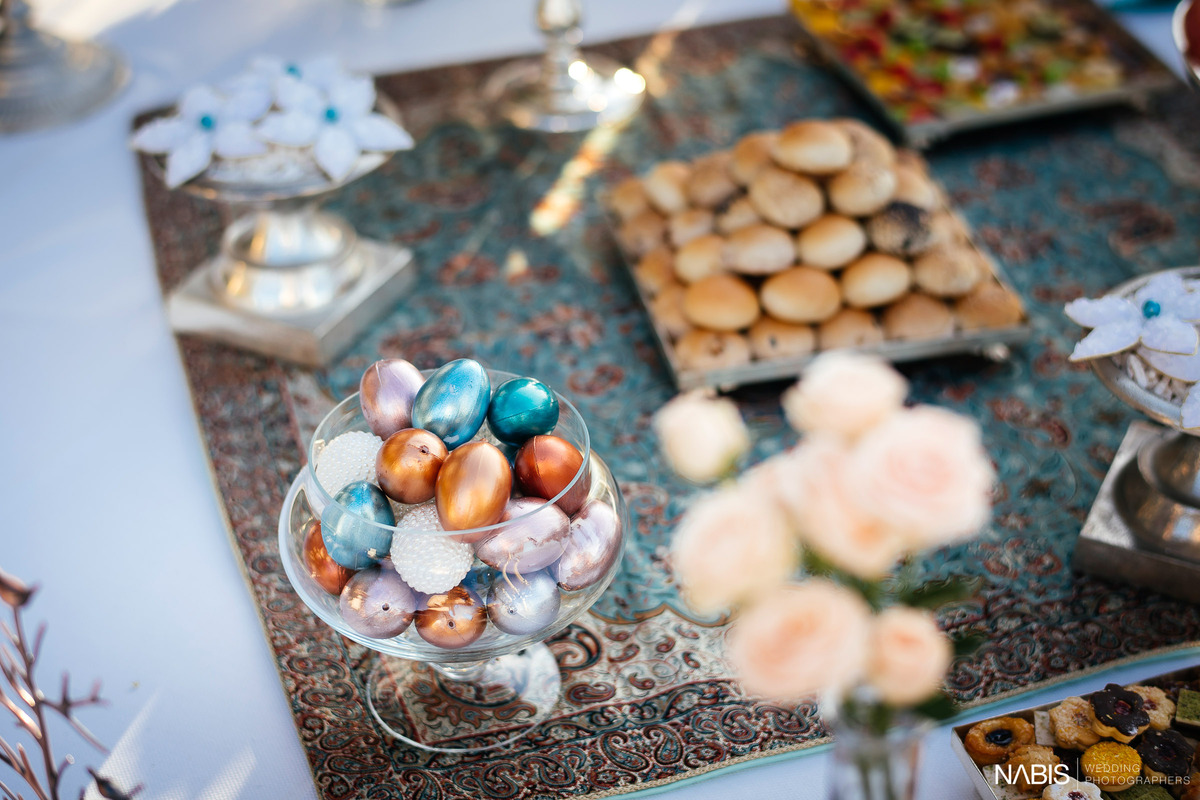
The Sacred Book –this book lies open on the table and later is usually held by the couple themselves. It can be either the holy book of the couple’s religion or a book of Persian poetry. This is usually the first item purchased for the Sofreh Aghd table.
Rosewater – is often part of the Sofreh Aghd to create a lovely smell, and is very appropriate, as it was first developed in Persia.
Threads – something that is always at a Sofreh Aghd is a needle with seven differently-colored threads. This is another very traditional item that is thought to bring good luck.
Eggs- a long-standing symbol of fertility, eggs are included on the Sofreh Aghd to bring about many happy, healthy children for the couple to carry on their lineage. These aren’t just any eggs, either. They are intricately decorated, often including historical designs and calligraphy.
Flowers – almost every Sofreh Aghd includes some sort of flower which is chosen to represent the couple as closely as possible. Traditionally, the flowers are placed on either side of the mirror to represent a harmonious union.
Gold Coins – after the ceremony, the gold coins on the Sofreh Aghd are traditionally put inside a pouch, sewn shut, and then taken home by the couple, never to be opened again. This is meant as a wish that the couple will always have more than enough money, and the coins are never meant to be spent, but rather stay within the home as a symbol of prosperity and abundance. Keeping the pouch close within the home will be a demonstration of refraining from greed.
Fruit – is a staple item on the Sofreh Aghd, as they symbolize good health. Typically pomegranates, apples, and grapes are selected, but the fruit can be anything the couple chooses. It is often presented in very creative ways, with complex arrangements and designs.
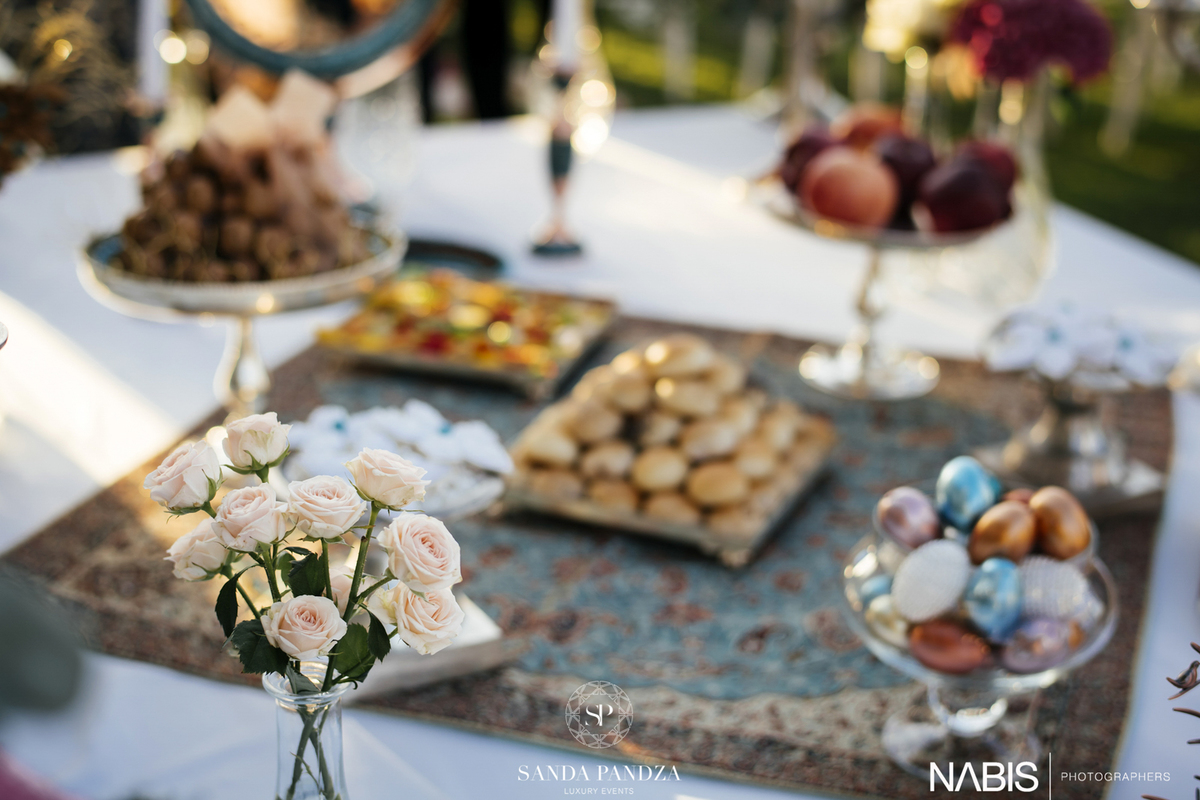
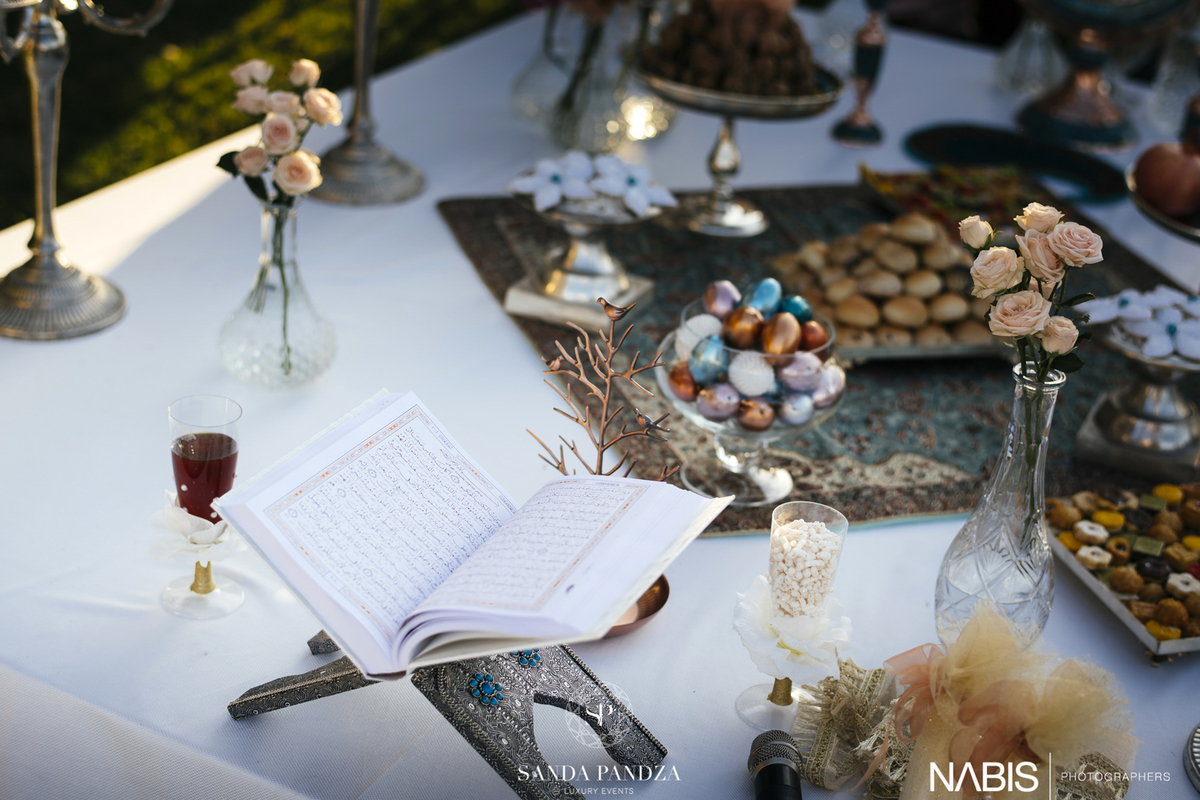
The Candelabra – or Shamdoon, symbolizes light—just like the mirror. However, it also represents fire, a purifying source which brings forth illumination, endurance, and eternality. There are always only two candelabras on the Sofreh.
Bread, Cheese, And Herbs – traditionally served to guests at the conclusion of the ceremony, Naan-o-Paneer-o-Sabzi is a trio of bread, cheese, and herbs arranged beautifully, with the symbolism of happy times shared among friends and family. It is thought to bring good luck, as well as representing purity, community, and good health.
Nuts and Sweets – every type of nut is welcome on the Sofreh Aghd. Whether it’s hazelnuts, almonds, walnuts, plain, salted or sweet nuts are a common and much-enjoyed part of the spread. They are said to represent abundance and renewal, as well as fertility.
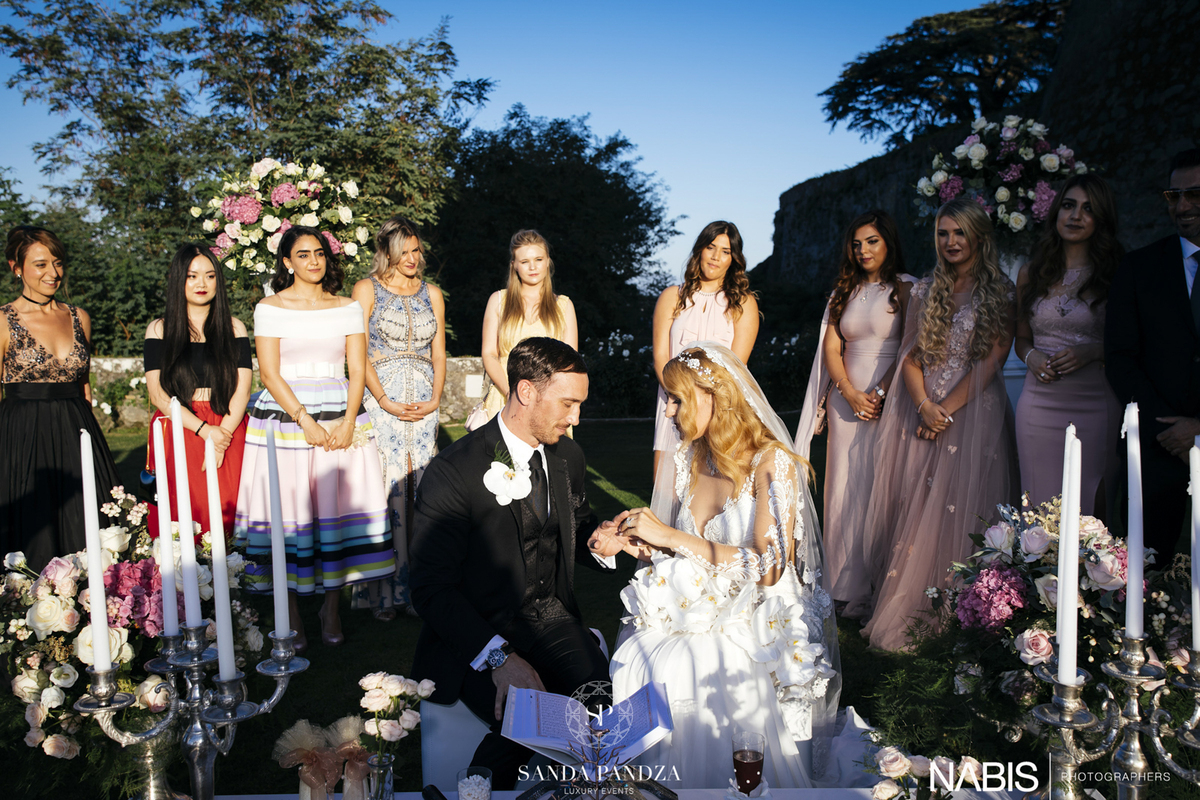
Persian weddings have another tradition called gol baroon, which translates to raining flowers. This typically occurs at the end of the reception. The bride and groom stand in the middle of the dance floor with their guests circling them and throwing flower petals on them as they dance and kiss. Beautiful photos aside, the gol baroon signifies beautiful wishes for the bride and groom as the night comes to an end and they begin their life together.
If you are looking for your destination wedding in Italy with the Persian ceremony traditions, you definitely need the local wedding planner who is expert and able to guide you during the whole destination wedding process: Sanda Pandza Events is specialized in Persian ceremonies for your destination weddings in Italy.

